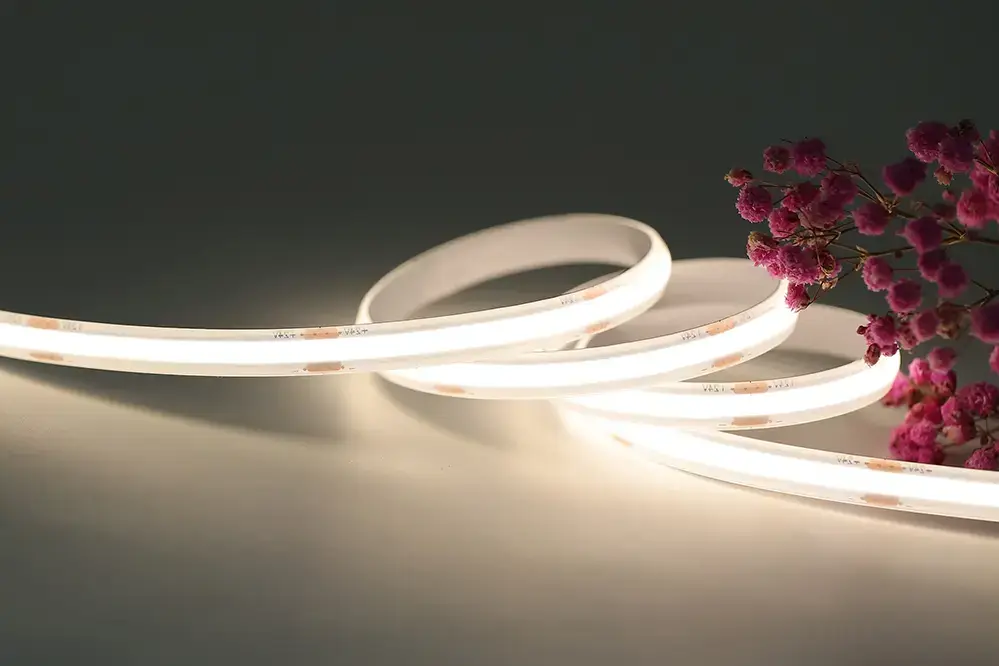Are you aware of the environmental and health considerations with LED strip usage that could transform your understanding of modern lighting? Many people assume that all LED strips are created equal, overlooking the nuances that can significantly impact both the environment and personal well-being.
While LED strips are celebrated for their energy efficiency and longevity, their production and disposal raise important questions about sustainability. Moreover, the benefits of LED strip usage extend beyond energy savings, offering enhanced lighting quality and reduced carbon footprints.
In this article, we will explore the environmental impact, health implications, and practical applications of LED strips. Prepare to embark on a journey that will illuminate the path to more informed and responsible lighting choices.
Benefits of LED Strips
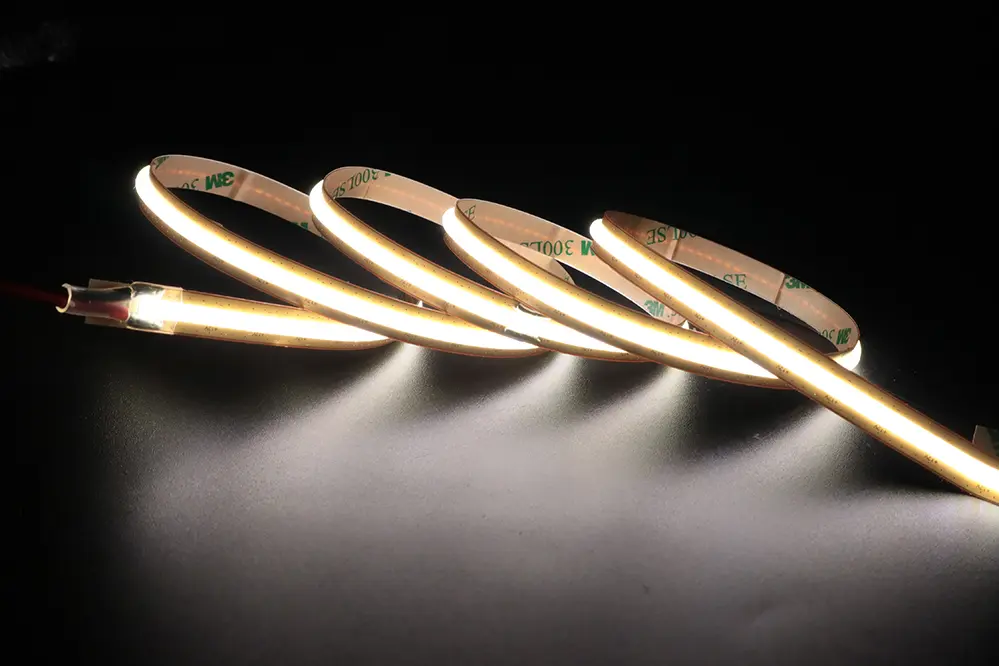
LED strips offer numerous advantages, primarily in terms of energy efficiency, which translates into considerable savings on the electricity bill. Furthermore, they promise an immediate positive impact on the environment through reduced energy consumption.
Their versatility shines through as well, allowing customization to suit any space or mood, enhancing the ambiance of the environment. This flexibility caters to both functional needs and aesthetic preferences.
In addition to design benefits, LED strips exude longevity, often lasting tens of thousands of hours (significantly outlasting traditional lighting choices) and thus reducing replacement costs.
Notably, these strips also contribute to enhanced safety by producing less heat, which addresses safety concerns by mitigating potential fire and electrical hazards. This inherent safety feature is particularly beneficial in diverse applications such as cabinets and furniture.
Moreover, their capability to emit no ultraviolet rays and reduced glare ensures materials and artwork in illuminated spaces remain unaffected by light damage, preserving and protecting valuable possessions.
Collectively, these benefits underscore the importance of considering LED strips not just as a lighting option, but as a transformative sustainability solution. Their adoption is a stride towards a brighter, more efficient, and environmentally-conscious future.
Energy Efficiency of LED Strips
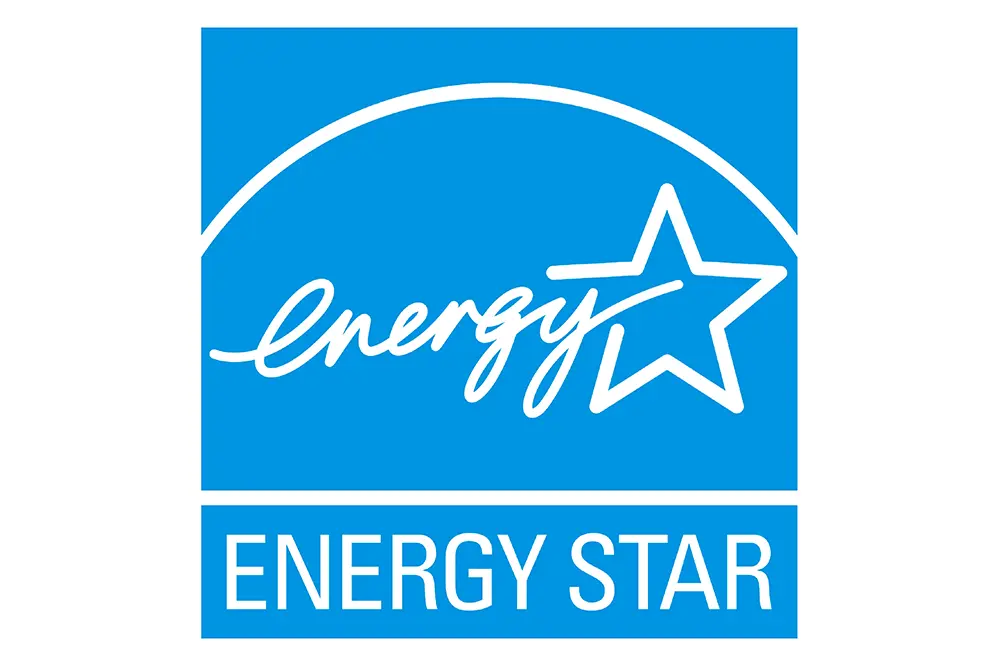
LED strip lights are paragons of energy efficiency, revolutionizing how we illuminate our surroundings while being environmentally friendly. By consuming less power than conventional lighting, they offer substantial savings on energy bills, providing both economic and ecological advantages. In comparison with traditional incandescent bulbs, LED strips boast remarkable energy consumption reductions, further promoting sustainable choices.
The terms “eco-friendly” and “cost-effective” have become synonymous when referring to the ‘green revolution’.
Comparing Energy Use with Traditional Lighting
LED strips have rapidly advanced as a superior alternative in energy efficiency, given their innovative approach to lighting environments with reduced electricity use and longer lifespan. Compared to traditional lighting methods like incandescent and halogen bulbs, LED strips consume substantially less power. This shift represents a considerable transformation in the way energy resources are managed, reducing carbon footprints and supporting sustainability initiatives.
Modern lighting demands are increasingly aligned with “smart solutions.” LED strips not only satisfy these needs through their energy-saving capabilities but also enhance illumination quality without eco-destructive consequences.
LEDs use up to 75% less energy and last 25 times longer than incandescent bulbs.
This compelling efficiency difference translates into both immediate and long-term savings. For homeowners and businesses alike, transitioning to LED strip lighting means less frequent replacements and lower energy expenditures. The collective reduction in energy usage has a rippling effect, contributing to global efforts in environmental preservation while inspiring a shift towards innovative, resource-conscious habits in lighting practices.
Environmental Impact of LED Manufacturing
The manufacturing of LED strips, though beneficial in operation, does have an environmental footprint that merits attention.
Firstly, the raw materials necessary for LED production, such as gallium, indium, and rare-earth materials, involve mining processes that may disrupt local ecosystems, leading to a series of cascading environmental effects. Despite these challenges, advancements in recycling technologies have enabled the recovery and reuse of these critical components, fostering a more sustainable lifecycle.
Moreover, the energy consumption during the LED manufacturing process can not be overlooked. By implementing green production technologies, many manufacturers are reducing their carbon emissions, making the adoption of LED strips more aligned with eco-friendly goals.
In conclusion, as LED technology evolves, it remains imperative to balance its undeniable benefits with environmental stewardship. Understanding the broader lifecycle impact and striving for continuous improvements in production processes ensure that the promise of LEDs doesn’t come at the unwarranted expense of our planet’s health. Future innovations aim to not only sustain but enhance these strides, leading to a brighter and more sustainable tomorrow.
Disposal and Recycling of LED Strips
The increasing adoption of led strip lights highlights the importance of sustainable disposal and recycling practices. How can we effectively address these critical considerations?
In 2016, California began a landmark initiative mandating manufacturers to adopt comprehensive strategies ensuring LED strips, once obsolete, enter responsible recycling channels. These efforts highlight an industry-wide recognition of sustainability.
Today, it’s vital for users to understand LED strips’ composition to facilitate their recycling. Many contain small amounts of metals and components that must be handled once illumination ceases, necessitating more informed disposal methods.
Technologies on the horizon promise to transform these practices, enabling LEDs to become products not of waste but of renewal. Emerging solutions might even reduce the 8% of electronic waste, reflecting innovative thinking and proactive stewardship.
Embracing a future where LED usage and disposal consider ecological and health impacts promises immense advancement. Keep recycling LED strips efficiently.
Materials Used in LED Strips
LED strips are crafted from advanced materials, a hallmark of technological innovation, which vary widely. Primarily, they include semiconductor materials like gallium nitride, allowing for efficient light emission. Reflective surfaces and adhesives, combined with a silicone or polyurethane waterproof casing for durability and flexibility, ensure maximum performance while remaining environmentally considerate. This thoughtfully selected composition underscores the need for conscientious recycling, as these materials, when managed correctly, align with the aim of minimizing environmental impact and promoting healthful living spaces.
Toxic Elements in LED Products
While LED strips are lauded for their energy efficiency, it’s important to address the potential presence of toxic elements that can contribute to toxicity.
- Lead: Used in soldering, can cause developmental and neurological issues.
- Arsenic: Sometimes employed in semiconductor materials poses health risks.
- Cadmium: Found in certain color phosphors, a potential carcinogen.
- Antimony: Used as a flame retardant, can be harmful in large amounts.
Understanding these elements aids responsible product selection and promotes safer environments.
Proactively selecting LEDs with safer compositions minimizes health hazards and environmental impact.
Empowered by knowledge, we can make informed choices that safeguard both our health and planet.
Health Considerations with LED Usage
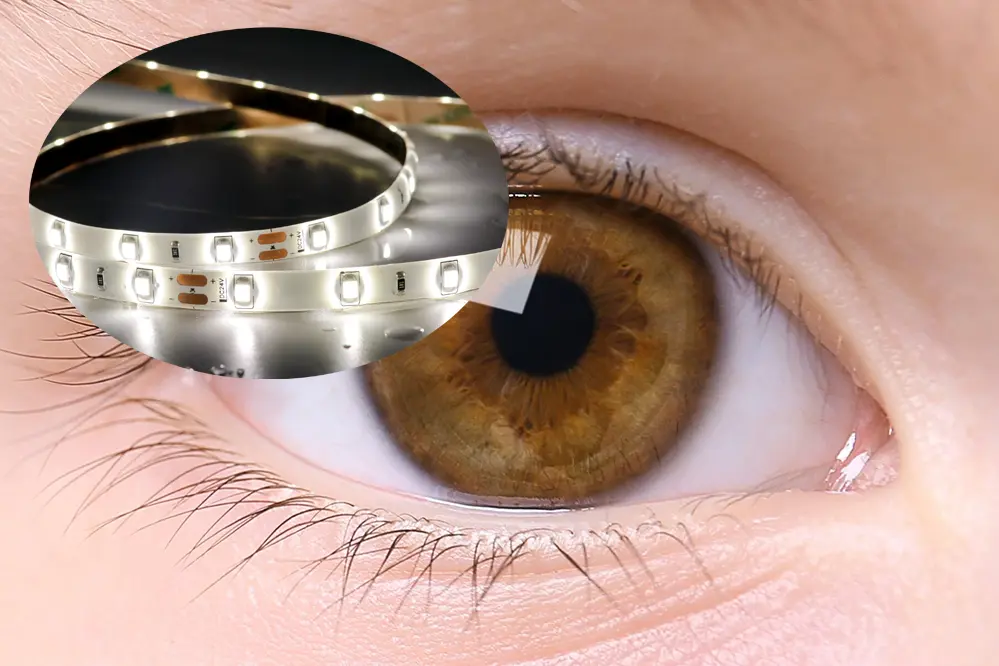
Innovative LED technology, a beacon of energy-efficient illumination, offers more than just savings. Recent studies indicate that LEDs, when appropriately chosen and utilized, provide a sustainable lighting solution that nurtures well-being, ensuring brighter and healthier surroundings.
To mitigate any concerns of a blue-light conundrum, opt for “warmer hues”. While it is not an imminent risk, prolonged exposure to high-intensity blue light may impact sleep patterns. On this front, the adaptability of LED light settings empowers users to control their environment, promoting a harmonious balance between technology and health-conscious living.
Light Quality and Eye Strain
LED strip lights can enhance visual comfort effectively.
The innovative dynamics of LED technology have brought light quality to new heights. This advancement results in more precise illumination that is gentle on the eyes. The adaptability of LEDs allows users to customize brightness and color temperature; thus, creating an ambient atmosphere tailored to reducing eye fatigue.
Choosing quality LEDs can significantly reduce eye strain.
Users are encouraged to select LED strip lights that offer adjustable settings—tailored lighting ensures minimal eye discomfort. Diverse lighting options foster environments conducive to both relaxation and productivity.
Recent advancements emphasize high-quality LEDs that produce consistent, glare-free illumination. The promising trajectory of LED developments, as of October 2023, suggests continued improvements that enhance light quality. These strides make LED strips a great choice for reducing eye fatigue and supporting sustainable practices.
Understanding Blue Light Emission
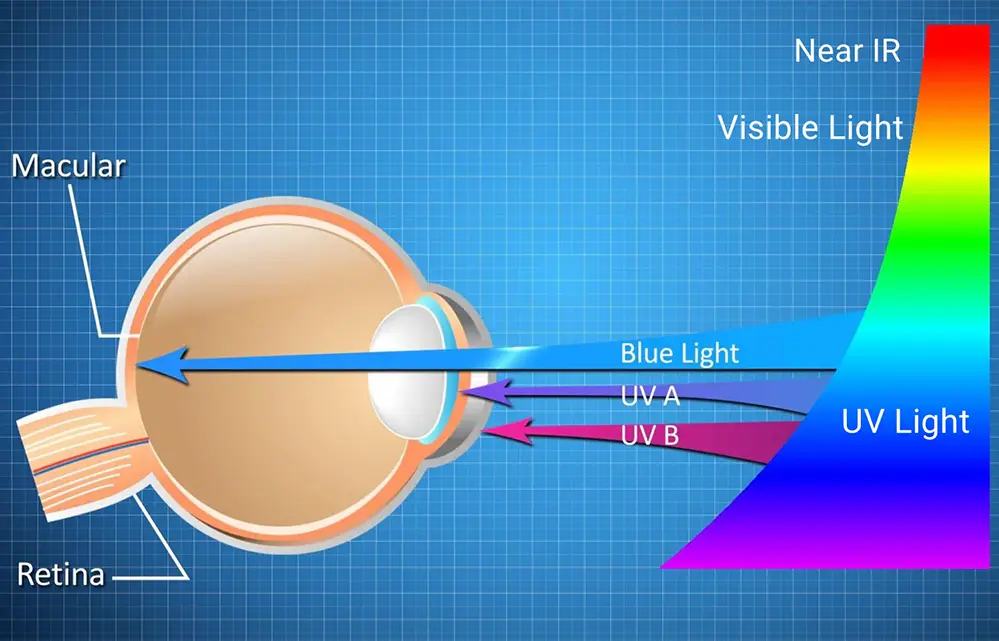
LEDs emit a spectrum of light, encompassing various wavelengths, among which blue light is prominent. As ubiquitous as LEDs have become, understanding their blue light emission is vital for both environmental and health considerations with LED strip usage, aiding informed decision-making.
A significant focus surrounds the implications of blue light, often termed “high-energy visible light.” While it is a component of natural daylight, excessive exposure to this frequency through artificial sources raises apprehensions. In this context, leveraging LED technology that incorporates filters or adjustments can mitigate potential adverse effects, ensuring that benefits outweigh risks.
Effects on Sleep Patterns
While LED strips provide versatile lighting solutions, they can influence sleep patterns due to their blue light emission.
- Blue light exposure: Suppresses melatonin production, a crucial hormone for sleep regulation.
- Circadian rhythm disruption: May affect the body’s natural sleep-wake cycle when exposed to LED lighting at night.
- Reduced sleep quality: Continual exposure often leads to difficulties in falling and staying asleep.
- Potential solutions: Use LED strips with adjustable warmth or integrate smart lighting control to minimize impact.
Proactively managing LED strip usage can help maintain a healthy sleep environment.
Incorporating dimming features and warmer color tones can ease transitions to restful nighttime settings.
Safe Installation of LED Strips
LED strips exemplify modern lighting innovation, led lights providing versatile and energy-efficient solutions.
Ensuring a safe and effective installation involves careful planning, including evaluating potential fire risks. The first step is to select the proper power supply, crucial for avoiding electrical mishaps. Next, it’s imperative to ensure the surface where the strips are installed is clean and dry. Moreover, regard for the strip’s IP rating will determine suitability for intended environments.
Secure installations reduce maintenance concerns.
This is particularly important when installing LED strips in areas with high moisture levels – like under kitchen cabinets – as water exposure necessitates an emphasis on product specifications like water-resistance for safety assurance.
By adhering to these guidelines, you champion innovation while prioritizing safety, heralding a future where the transformative possibilities of LED technology illuminate spaces with reliability and wonder. Such meticulous planning ensures your lighting solutions remain not only dazzling but also safely grounded in prudent installation practices.
Mitigating Heat Production in LEDs
Though LEDs are known for their energy efficiency, managing heat production is vital to their performance and longevity.
Innovative designs have emerged in the industry to address heat management, ensuring that LED strips not only illuminate but also endure. Advances in thermal management materials and heat sink technologies help keep temperatures under control, reducing the potential for overheating. These developments, coupled with strategically designed housings, ensure that LED strips maintain optimal temperature levels, securing both efficiency and lifespan.
Consequently, choosing LED strips with integrated heat dissipation features is crucial. In doing so, users benefit from prolonged operational periods without the necessity of frequent replacements or repairs due to thermal breakdowns, safeguarding the investment and functionality of lighting applications.
Ultimately, by prioritizing technological advances in heat management, enthusiasts and professionals alike can continue to harness the exceptional benefits of LEDs. Such innovations in thermal dynamics not only promise more sustainable and longer-lasting lighting solutions but also contribute substantially to environmental conservation and energy savings, magnifying the positive impact of LED technology across diverse applications.
Managing Electromagnetic Interference
LED strips can emit electromagnetic interference (EMI).
Managing this aspect is crucial for electronic devices. EMI can affect not only the strip itself but also other nearby appliances and systems. Therefore, it’s essential to align with the necessary standards of electromagnetic compatibility, adhering to set limits that ensure safety. Fortunately, many manufacturers are taking the initiative to incorporate designs to minimize interference from these vibrant strips.
Reducing EMI involves the installation of filters.
These filters effectively suppress unwanted noise — an approach that helps maintain the integrity of device communications and operation. Moreover, by employing shielding materials, LED strips can be further insulated, safeguarding them against disturbances.
The positive strides in controlling electromagnetic interference allow for a seamless integration of LED strips into various environments, ensuring innovation remains undeterred and unwavering. Rigorous attention to EMI management signifies a conscientious commitment to the end-user experience and upholds standards of performance in modern lighting technology.
Government Regulations and Standards
The significance of government regulations is paramount in the regulation of LED strip lighting usage worldwide.
Recent years, underlining sustainability, a pivotal global agreement established regulations, advancing LED technology with environmental efficiency in focus. These measures ensure LED strips adhere to eco-friendly standards, fostering innovation.
It’s no surprise that the industry’s commitment to offering widespread illumination aligns with regulatory benchmarks. The regulations ensure LED strips meet efficiency criteria, prompting manufacturers to prioritize quality alongside environmental consciousness.
These standards dictate not just environmental stewardship but economic efficiency, encouraging growth that doesn’t compromise our planet. They provide concrete guidelines, promoting advancements in energy-saving technologies.
Together, we continue to innovate while aligning with standards that propel sustainable progress.
Innovations in Sustainable LED Technology
Exciting strides continue to emerge in LED technology.
These innovations stem from both need and vision. Over recent years, the quest to create more sustainable lighting solutions has spurred unprecedented levels of technological advancement, ensuring our bright future remains ecologically sound. Remarkably, strides in new materials and methodologies for emitting light with reduced energy consumption now illuminate our path forward.
Such leaps in efficiency propel environmental benefits.
For instance, organic light-emitting diodes (OLEDs) have demonstrated how versatile they can be—reducing carbon footprint without undermining performance or cost feasibility. OLEDs and similar technologies unlock energy-efficient possibilities previously thought impossible.
The forthcoming wave of sustainable LED innovations not only reinvents how we illuminate our spaces but also fortifies our commitment to environmental stewardship. Progressive industry minds focus on empowering 2023’s agenda and beyond with pioneering solutions. Through collective effort, brighter and more sustainable horizons await, reaffirming our capacity to redefine the future of lighting.
Choosing Eco-Friendly LED Brands
Embracing environmentally conscious LED brands is a commendable step toward promoting sustainable living and energy efficiency, setting the stage for a greener tomorrow.
Eco-friendly brands highlight their commitment to sustainable practices.
When deciding on a brand, it’s crucial to consider manufacturers that focus on a comprehensive approach to sustainability—incorporating renewable materials, efficient transport, and responsible manufacturing processes.
Enthusiastic brands transparently communicate their efforts to embody these values and offer a spectrum of eco-friendly options. By seeking certifications such as “Energy Star,” consumers can more confidently align their choices with the overarching narrative of sustainability. In making these informed decisions, we further illuminate our commitment to the planet.
Reducing Environmental and Health Impacts
Every choice impacts the world around us.
Advancements in LED technology have opened new doors for sustainability. The smart selection of LED products can significantly reduce the adverse impacts of lighting on both environmental and health aspects, putting us on a path towards more sustainable practices. Furthermore, adhering to the use of energy-efficient designs mitigates the burden of excessive carbon emissions.
The shift to LEDs lowers energy consumption drastically.
LEDs offer a cleaner, more energy-efficient alternative – with their reduced heat output lessening environmental strain due to extensive power consumption. Consequently, this helps in lowering the carbon footprint associated with traditional lighting.
The transformative potential of embracing environmentally minded practices with LEDs aligns beautifully with our 2023 vision for greener living. By emphasizing energy efficiency and sustainability in lighting, individuals and communities can harness innovative solutions that not only reduce their ecological impact but also safeguard health and promote well-being across the globe.
Conclusion
Exploring the environmental and health considerations with LED strip usage underscores the critical role of sustainable choices in our daily lives. As we transition to LED technology, we not only enhance energy efficiency but also contribute to cleaner air and healthier living environments. This shift represents a commitment to innovation and sustainability, paving the way for improved technologies that align with eco-friendly practices. By integrating LEDs into our homes and businesses, we actively participate in the global effort to reduce carbon footprints and promote a healthier planet.
The adoption of LED strips exemplifies how incremental changes can lead to significant environmental benefits and improved quality of life. These lighting solutions offer a practical pathway to sustainability, encouraging us to make informed decisions that support long-term ecological balance. As we continue on this illuminating journey, we are reminded of our responsibility to create a legacy of environmental stewardship. By embracing LED technology, we steer our world toward a brighter, healthier future, driven by the power of informed and responsible choices.
As you consider the environmental and health considerations with LED strip usage, partnering with a reputable manufacturer can make all the difference. Unitop, a leading Chinese manufacturer of LED strip lights and LED neon strips, offers expertise and quality that ensure your lighting solutions are both sustainable and efficient. By choosing Unitop, you gain access to innovative products that align with your commitment to eco-friendly practices and superior lighting performance. Reach out to Unitop today to explore their range of LED solutions and take a confident step towards a brighter, more sustainable future.
